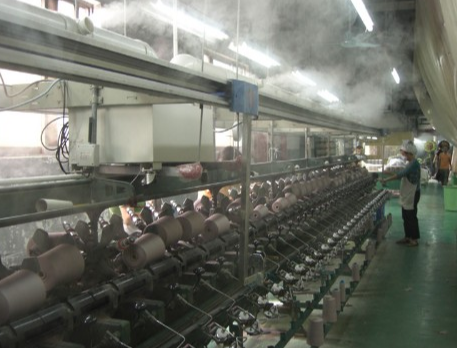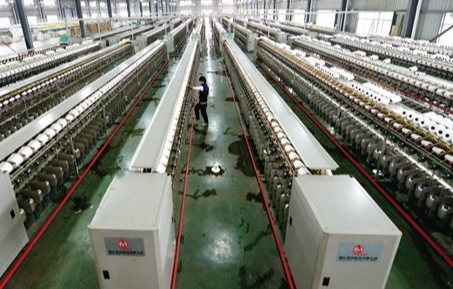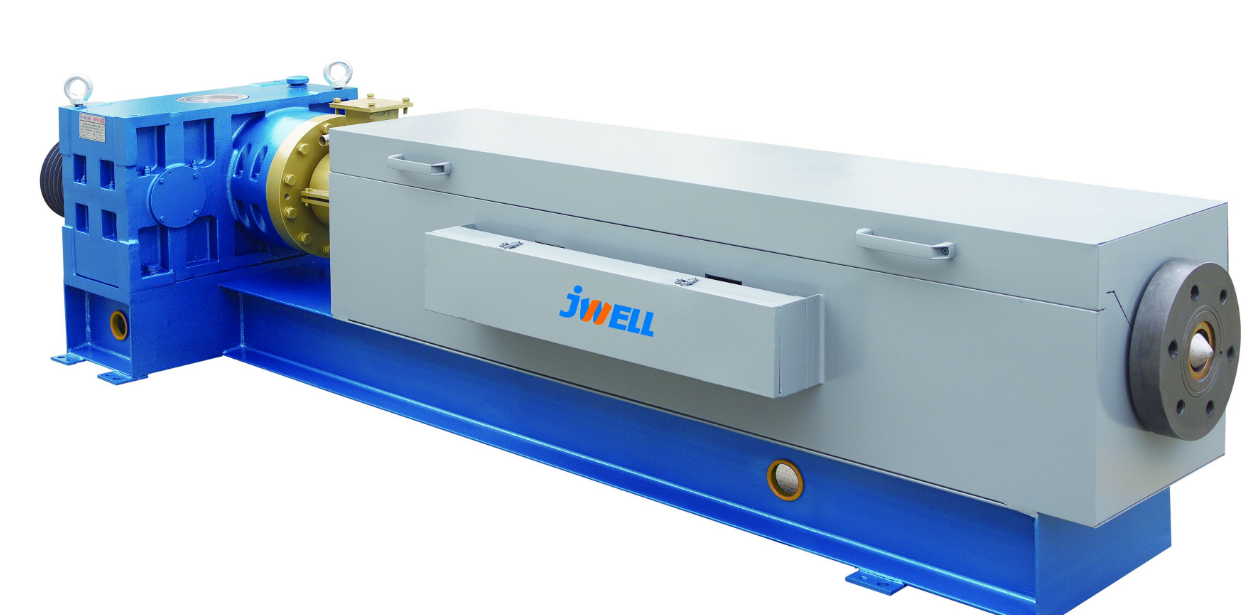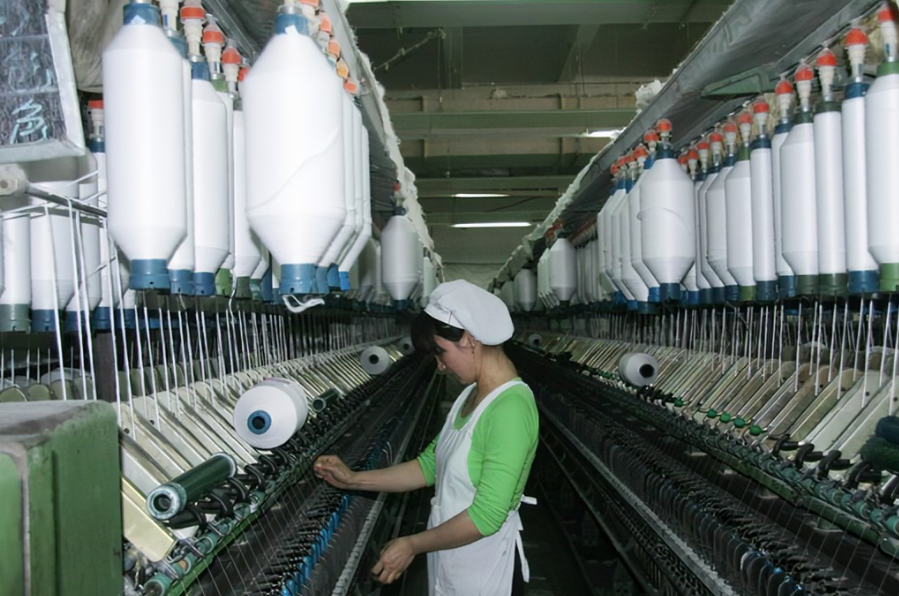Textile chemical fiber industry to "green" forward
As one of the first industrial sectors in China to propose the implementation of a carbon neutral path, the textile industry is at the forefront in green manufacturing, recycling, and sustainable management innovation. Textile chemical fiber enterprises will be green as the most beautiful background color to describe their own development results, low-carbon, green and innovation throughout, explore new technologies and new equipment for energy conservation and environmental protection, and improve the comprehensive utilization rate of energy. It is understood that as of 2021, 36 chemical fiber green factories, 48 kinds of green design products, and 3 green supply chain enterprises have been listed in the green manufacturing system list of the Ministry of Industry and Information Technology. Whether it is to obtain the "Grand slam" of green manufacturing, the green factory to try first, or in this year's two sessions proposed to "build a safe ecology of the green fiber industry" and "accelerate the creation of a green supply system", textile chemical fiber enterprises are taking action to practice their responsibilities and move forward by "green".
A Focus on "double carbon" to highlight the "green" responsibility of large enterprises
Recently, in the 2022 green manufacturing list announced by the Ministry of Industry and Information Technology, New Fengming was shortlisted for the 2022 National Green Factory list, after Huzhou Base won the 2018 National green factory, 2019 national green design products, 2019 national green supply chain, and achieved the Grand Slam in the field of green manufacturing, and once again won national authority recognition.
According to the Futures Daily reporter, the state-level "green factory" creation activity is a national selection activity organized by the Ministry of Industry and Information Technology since 2017, which is an authoritative identification for enterprises in line with the "green development", aimed at improving China's green manufacturing system, fully implementing green manufacturing, and helping the industrial field to achieve the "double carbon" goal.

Zhang Sixi, assistant president of New Fengming Group, told reporters that since the establishment of the factory, new Fengming has adhered to the concept of green design and low-carbon development as the first priority of the company's development, and has continuously explored and grown on the road of "real economy, reform and innovation, quality and efficiency improvement, and green development", reflecting the green responsibility of large enterprises.
"Focusing on the 'double carbon' strategy, the company will consciously put the 'ecological priority, green development' concept throughout the business activities, continue to actively explore the zero-carbon process route, and contribute to the green development of the '14th Five-Year Plan' industry." Chapter four evening called.
It is understood that through the upgrading of raw material utilization and production process, smart supply chain, infrastructure and environmental emissions, Xinfengming fully realizes the core goals of green manufacturing, such as energy saving, consumption reduction, pollution reduction and efficiency, and truly achieves green development while saving costs for enterprises.
"We not only produce qualified products through the waste silk recycling process, but also greatly reduce the pollution emissions in the production process of the enterprise." Through technical transformation of production plants, construction of waste heat power generation projects and photovoltaic projects, energy consumption has been effectively reduced."
Tongkun Group focuses on enterprise energy optimization and green development under the background of "dual carbon", has been listed on the green manufacturing list of the Ministry of Industry and Information Technology for many times, and won the honors of green design products, green design demonstration enterprises, green factories and green supply chain management enterprises. Its "Multi-functional differentiated polyester fiber green manufacturing and application technology integrated innovation" project, won the first prize of Zhejiang Science and Technology Progress Award, the project through the integration of intelligent advanced equipment and green process technology application, the product energy consumption than the peer unit comprehensive energy consumption level I standard 20% lower.
In fact, after the development of the "13th Five-Year Plan", China's chemical fiber industry has achieved remarkable results in promoting high-end, intelligent and green development and consolidating the leading position of the industry. At present, around the new positioning of the industry of "science and technology, fashion and green", textile chemical fiber enterprises have embarked on a new journey of the "14th Five-Year Plan".
Chen Xinwei, president of the China Chemical Fiber Industry Association, said in an interview with China Textile News that chemical fiber is mainly based on petroleum resources as raw materials, reducing the impact on the environment and improving the recycling level is the key to the sustainable development of the chemical fiber industry, and it is necessary to improve the technical system and standard system dominated by green manufacturing technology. At the same time, a new fashion has been formed to use recycled products as new materials and consumption. Combined with the trend of green consumption and the demands of the industrial chain, the development of recycling and bio-based materials with natural renewable and biodegradable raw materials is one of the effective ways.

During the interview, the reporter learned that as a comprehensive utilization enterprise of recycled polyester resources, Haili Environmental Protection has formed a complete green industrial chain from the acquisition of waste polyester bottles, the processing and purification of bottle chips to the production of recycled polyester filament.
"Haili Environmental practices the role of a national green factory, and its recycled polyester filament has a 'green gene' throughout its life cycle, that is, the material can be recycled, the manufacturing process is green, and the product can be recycled, thereby reducing the supply chain 'carbon' output to the downstream weaving link." Industry insiders say.
According to the industry, Haili Environmental protection's recycled polyester filament products are positioned for differentiation and functionalization, and have obtained GRS global regeneration standard certification and OEKO-TEX100 infant contact level certification, etc., which has won the "green pass" for the company's recycled fiber expansion in the international market. At present, Haili Environmental Protection has customized high-end green recycled fibers for international brands such as IKEA and Samsonite.
B Directly hit the "pain point" to improve the level of green and low-carbon development of the industry
It is understood that the Ministry of Environmental Protection in 41 key industries in China's industrial wastewater emissions survey found that the textile industry annual wastewater emissions of 1.961 billion tons, accounting for 10.5% of the total industrial wastewater emissions, second only to the paper industry and chemical industry, which is also the largest "pain point" in the development of the textile industry.
The realization of industrial green development is inseparable from environmental protection regulation. It is understood that since 2017, many textile towns in Jiangsu have actively carried out special activities for environmental protection. According to the special renovation task table of water jet loom in Wujiang District, from 2017 to 2019, the total amount of water jet loom is planned to be reduced by 102,000 units, accounting for 30% of the elimination. Recently, Wujiang implemented a new round of water jet loom shutdown regulation, it is expected that by 2025, the number of water jet loom dropped to near 160,000 units, accounting for about 50% of the 2017 regulation before.
Liu Siqi, an analyst at Zijin Tianfeng Futures, said that shutting down some high-energy-consuming water-jet loom companies can save water resources, reduce sewage discharge, and restore green mountains and green water. Through enterprise integration, industrial chain clustering and intensification can be achieved to enhance the competitiveness of the weaving industry.
Similarly, in the key link of the textile industry chain, printing and dyeing exhaust gas pollution can not be underestimated, and the green development of printing and dyeing industry is also related to the improvement of the core competitiveness of the textile industry chain.
The reporter learned that the National People's Congress, the upstream enterprises of the textile industry "head", Song Xiquan, chairman of Taihe New Materials Group, has been very concerned about the development of the textile industry chain. In the industry research, he found that in recent years, the transformation and upgrading of the printing and dyeing industry has achieved remarkable results, but it still faces problems such as complex and severe development environment and green and low-carbon development level to be improved.

Song Xiquan proposed in this year's two sessions to promote the healthy development of the printing and dyeing industry to ensure the competitive advantage of China's textile industry chain. He suggested that we should increase support for the development of printing and dyeing parks, introduce support policies such as the management of printing and dyeing park agglomeration development funds, and guide printing and dyeing enterprises to gather in standardized industrial parks; Fully provide the supporting environmental protection indicators, so that the park's environmental assessment, energy assessment, pollution and other indicators can be optimized; Improve the sewage network and other supporting facilities to provide conditions for the development of printing and dyeing enterprises in the park. At the same time, he suggested that the science and technology department set up a special project for the green development of the printing and dyeing industry, accelerate the transformation of green scientific and technological achievements, and gradually establish a green development model based on technological progress to further enhance the core competitiveness of China's textile industry.
Accelerating the green transformation and upgrading of traditional industries and promoting the synergies of water conservation, pollution reduction and carbon reduction are the only way to achieve high-quality industrial development, and are also the key to implementing and fulfilling the commitment of carbon peak and carbon neutrality. Under the guidance of the green economy to achieve high-quality development, the textile chemical fiber industry is achieving green development of the industry through technological upgrading, centralized closure and rectification of energy-consuming industries, and cluster development of the industrial chain.
"At present, the textile chemical fiber industry will still encounter many problems on the way to green manufacturing." Zhang Sixi told reporters that the investment cost of green transformation in the early stage is high, although the government will have a certain amount of capital subsidies, but small and micro textile enterprises are difficult to cover the cost, which has hit the expansion enthusiasm of enterprises' textile production capacity. In addition, too fast green transformation will also bring unreasonable energy consumption control system, so that enterprises are forced to reduce production, which has a certain impact on their production management.
In this regard, Liu Siqi suggested that the government should increase the promotion of new technologies, new processes and new equipment for energy saving and environmental protection, increase the guidance of the integration and cluster development of the polyester weaving industry chain, implement government subsidies for enterprises to achieve green innovation and development, increase support for green enterprises to achieve high-quality development, form a leading demonstration role, and encourage more enterprises to green transformation.
C Green development enterprises to achieve low carbon and efficiency promotion
Reduce the total consumption of resources, reduce pollutant emissions, improve the supply capacity of green products, and incrementally develop green industries... At present, accelerating green development is becoming an important way for the textile chemical fiber industry to achieve high-quality development.
In the view of the industry, green development is the inevitable choice for the sustainable development of the textile industry, is becoming the new driving force for the high-quality development of the textile industry, and is an important measure to consolidate the leading position of the dominant industry.
Accelerating the practice of green development concepts, increasing the promotion and application of green energy saving and emission reduction technologies, forming green low-carbon production methods, and providing more green consumer products are important measures for China's textile industry to enter the high-end of the industrial value chain, form new advantages in international trade, and improve the core competitiveness of the industry.

In 2022, under the background of multiple pressures, cost reduction and efficiency increase have become an important means to stabilize the economic development of the industry. It is a general trend to reduce costs and increase efficiency in the field of green and low-carbon recycling, and it should also be an active behavior with economic, environmental and social benefits.
On February 26, 2023, Jiangsu Xintuo, a wholly-owned subsidiary of Xinfengming, officially put into operation the 360,000 tons of low-carbon and environmentally friendly new material intelligent manufacturing project. The reporter learned that the project uses the "5G+ industrial Internet platform" independently developed by New Fengming, which will create an advanced, demonstrative and leading smart factory in the travel industry.
"In the process of green transformation, Xinfengming mainly optimized infrastructure, innovated technology and invested in green functional projects, which reduced energy consumption and carbon emissions." According to Zhang Sixi, in the compressed air heat exchanger transformation project, the implementation of the energy-saving program to replace the original refrigerated dryer with a heat exchanger has not only saved energy, but also greatly improved the efficiency of the device. Sewage treatment facilities adopt anaerobic + aerobic secondary biochemical treatment process to effectively improve the reuse rate of reclaimed water.
"In the wastewater stripping project, multi-stage purification of industrial acetaldehyde and ethylene glycol, on the basis of greatly reducing the COD of wastewater, to achieve high value utilization of organic matter, to reduce cost and increase efficiency for enterprises." Chapter four evening called.
"If textile chemical fiber enterprises can transform to green industry development, research and development of new technologies, new equipment and new materials, not only help to improve the competitiveness of enterprises, new equipment and new technology can also save energy costs, further improve the production efficiency of enterprises." Chapter four evening called.
The reporter learned that the realization of resource recycling and the establishment of a sustainable development mechanism will help the textile chemical fiber industry to form a group of leading enterprises with strong competitiveness and achieve high-quality development. At present, a number of leading enterprises in the industry through technological innovation and management optimization, to achieve green economy, drive the double improvement of energy efficiency and performance, forming a model of green coordinated development.
As a leading enterprise in China's chemical fiber industry, Xinxiang Egret Investment Group has long been concerned about the green, low-carbon and sustainable development of the chemical fiber industry. In this year's two sessions, Shao Changjin, a deputy to the National People's Congress and chairman of Egret Investment Group, proposed to create a safe ecology of the green fiber industry, hoping to rely on continuous scientific research, and strive to replace imported cellulose raw materials with renewable plant fibers, create a safe ecology of China's green fiber industry, and further enhance the international competitiveness of traditional advantageous industries.
D Circular economy
Reshape the competitive advantage of the industry
From the perspective of the situation and requirements of green and low-carbon development, China has proposed to strive to achieve the peak of carbon dioxide emissions before 2030 and achieve carbon neutrality before 2060. In the view of the industry, the new development goals put forward an important task of strengthening carbon emission reduction for the textile chemical fiber industry, and the green textile industry will also be promising.

"The textile chemical fiber industry should continue to improve the level of recycling. On the one hand, it is necessary to achieve large-scale and low-cost production of recycled polyester, and promote the research and development and industrialization of key technologies of recycled polyamide, recycled spandex, recycled viscose fiber, recycled high-performance fiber and other varieties; On the other hand, it is necessary to continue to promote the key technological breakthroughs and industrial development of the high-value utilization of waste textiles, and encourage relevant production enterprises to establish recycling systems." Industry insiders said that the textile industry should integrate concept and practice, balance reality and the future, accelerate the improvement of green total factor productivity, and achieve the unity of economic and ecological benefits and social benefits. To ensure the stability of the supply chain, it is necessary to further stabilize the scale advantage, strengthen the system advantage, enhance independent innovation and high-end manufacturing capabilities, and enhance the modernization of the industrial chain and supply chain.
In the future, with the continuous deepening of low-carbon and green development of textile chemical fiber, the backward development of high energy consumption and high pollution production capacity will be gradually limited, and the industrial chain will be reshuffled.
"The green development of textile and clothing weaving is bound to go through a process of eliminating energy-intensive and high-pollution production capacity, which is equivalent to the supply-side reform of the industrial chain." Liu Siqi said that through the supply side of backward production capacity clearing, industrial integration, cluster development, to achieve the overall carbon reduction of the industry, the average cost decline, the supply and demand pattern of the industrial chain improvement, the healthy development of industry profits.
In the process of production capacity clearance in the green transformation of the industry, it will inevitably bring large fluctuations in product prices. The reporter learned that the current textile industry related products cotton, cotton yarn, PTA, ethylene glycol, staple fiber and so on have been listed in the futures market, enterprises through futures tools can smooth the risk of price fluctuations, so as to achieve stable production and operation, futures tools to help enterprises green transformation, green development of the textile industry is also promising.

The physical delivery of the futures market has extremely strict quality requirements for the delivery target, and the futures quality standard has been unanimously recognized by the whole industry as the highest standard in the circulation field of related varieties in the same industry.
It is understood that at the beginning of this month, new Fengming (Zhonglei) became the newly designated short fiber delivery brand of Zhengshang Exchange. "After becoming a delivery brand, new Fengming can complete the purchase and sale of commodities through futures delivery, broaden market channels, achieve a breakthrough in the regional market, delivery brand can bring brand value-added effect to the product, can expand the brand's national influence and competitiveness." For downstream enterprises, the delivery of the received staple fiber is also more quality assurance." Zhang Sixi said that the establishment of delivery brands and delivery libraries has opened up the last kilometer of the futures market through delivery, which is conducive to the use of futures hedging function for enterprises to avoid risks.
In Zhang Sixi's view, the futures market mainly serves the real economy, and the introduction of "green" futures and option varieties will also provide a stable environment for the development of green production capacity for enterprises.
"We look forward to the early listing of carbon emission rights futures, so that entities can use the price discovery and risk management functions of the futures market to help the chemical fiber industry complete the 'double carbon' goal as soon as possible." Chapter four evening called.
- EMERSON
- Honeywell
- CTI
- Rolls-Royce
- General Electric
- Woodward
- Yaskawa
- xYCOM
- Motorola
- Siemens
- Rockwell
- ABB
- B&R
- HIMA
- Construction site
- electricity
- Automobile market
- PLC
- DCS
- Motor drivers
- VSD
- Implications
- cement
- CO2
- CEM
- methane
- Artificial intelligence
- Titanic
- Solar energy
- Hydrogen fuel cell
- Hydrogen and fuel cells
- Hydrogen and oxygen fuel cells
- tyre
- Chemical fiber
- dynamo
- corpuscle
- Pulp and paper
- printing
- fossil
- FANUC
- Food and beverage
- Life science
- Sewage treatment
- Personal care
- electricity
- boats
- infrastructure
- Automobile industry
- metallurgy
- Nuclear power generation
- Geothermal power generation
- Water and wastewater
- Infrastructure construction
- Mine hazard
- steel
- papermaking
- Natural gas industry
- Infrastructure construction
- Power and energy
- Rubber and plastic
- Renewable energy
- pharmacy
- mining
- Plastic industry
- Schneider
- Kongsberg
- NI
- Wind energy
- International petroleum
- International new energy network
- gas
- WATLOW
- ProSoft
- SEW
- wind
- ADVANCED
- Reliance
- YOKOGAWA
- TRICONEX
- FOXBORO
- METSO
- MAN
- Advantest
- ADVANCED
- ALSTOM
- Control Wave
- AB
- AMAT
- STUDER
- KONGSBERG
- MOTOROLA
- DANAHER MOTION
- Bently
- Galil
- EATON
- MOLEX
- Triconex
- DEIF
- B&W
- ZYGO
- Aerotech
- DANFOSS
- KOLLMORGEN
- Beijer
- Endress+Hauser
- MOOG
- KB
- Moxa
- Rexroth


Email:wang@kongjiangauto.com
























































































































